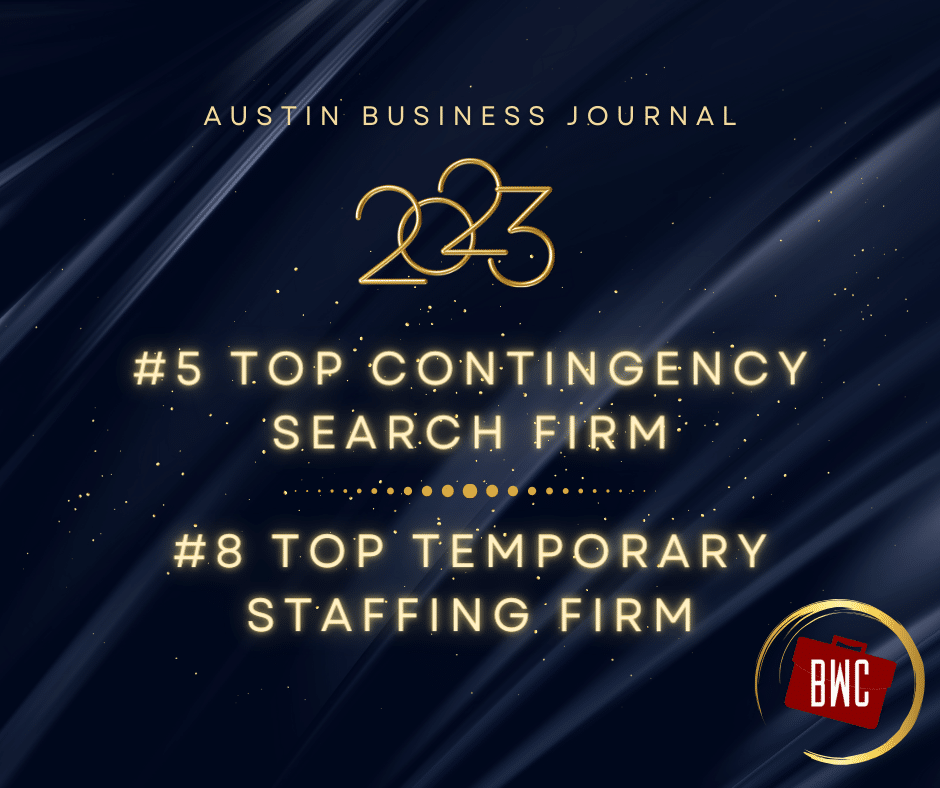Not too long ago, corporate recruiting efforts were fairly basic: We need an Accountant, we post the position on our website and a couple of job boards, we pick the best applicants, interview them 14 times, and leisurely hire from that group. Yes, the old “post and pray” method at its finest, and it actually worked in many cases back in the day. Not necessarily hiring the best and brightest, but jobs were filled.

Now we find ourselves in 2018 with more job openings than candidates to fill them. That’s a bit abstract, but let’s look at a specific example – an Accountant in Chicago, IL. Easy, right? Chicago has a great talent base, we should easily find our Accountant, no problem. We regularly hear this from clients who are seeking to fill a wide array of job types located in virtually any U.S. metro area. That’s a gross misconception in 2018.
Based on results generated by a professional-level labor market analysis tool used by Becker Wright Consultants, Chicago currently has 34,675 job openings for Accountants, but only 3,906 Accountants actively searching for work in Chicago. That means that there are 8.8 job openings for every Accountant seeking a new position.
Let that sink in for a minute. Every Accountant looking for work in Chicago has nearly 9 positions from which to choose. No, dear client, it’s not going to be easy to source that CPA with a master’s degree in accounting from the University of Chicago with deep experience in widget pricing analysis.
Those numbers are actual stats generated today by the professional market analysis tool, and similar numbers could be replicated across hundreds of job titles in dozens of locations. Post and pray cannot be effective in these market conditions. Nearly every Chicago-based Accountant who wants a job already has a job, and Sally Superstar is not cruising the job boards every day.
In these market conditions, we need a very different strategy – let’s call it “Poach and Pounce.”
The meaning is straightforward: In order to source candidates effectively today, we must actively seek those passive candidates (who are now working with your competitors) and alter our hiring practices so that we can quickly make decisions and extend offers to selected candidates within days, not 6-8 weeks out after 14 interviews.
This approach is quite different than the passive, glacial hiring practices to which some hiring managers and HR leaders are accustomed, and executive sponsorship may be needed to turn the tide. The key driver may turn out to be the results themselves. When Time-to-Fill (TTF) statistics become so unacceptable that departments and business units begin missing their numbers due largely to staffing shortages, leadership will certainly take notice and demand action. Either way, welcome to the age of Poach and Pounce.
Below are some considerations to make the transition more rapidly and effectively.
- Hire an exceptional executive search firm. We’ve been operating in this mindset for years, we know what we’re doing, and we get results quickly. In many companies, internal “recruiters” function more like “application sorters” based on long-standing hiring strategies and are not going to become an effective “real recruiter” overnight. Transitioning your firm’s entire hiring process to be effective in these market conditions will take months, perhaps years, and may require new employees with skill sets not currently on the team. Remember those TTF statistics? Recruiter fees are minimal compared to the value of not achieving key strategic objectives and hitting or not hitting this quarter’s numbers due to under-staffed teams. Perform a few calculations and this becomes clear. Employees should be evaluated in terms of organizational capability generated, not as a salary expense to be minimized.
- See #1 and repeat as necessary until full comprehension is achieved. This is truly the best approach.
For those firms that choose to try real recruiting for themselves, a few suggestions for your consideration:
- We’re in a war for talent and must pursue top employees from our competitors. There is nothing improper or unethical about going out and finding the talent we need to succeed – and that talent is now working for your competitors, not scanning your careers page with a starry look in their eyes. Think of it this way: Does your Business Development team have ethical concerns about bringing in a great new customer that’s now with your competitor?
- Think strategically about which companies are likely to have the talent you need, select several, and focus on those firms. Which competitors are fighting through business challenges? Their employees may feel vulnerable because of those problems and may be more receptive to a new opportunity.
- Employment Brand matters. This has little to do with the company’s marketing brand and is based on the “word on the street” (Glassdoor, others) about how great it is to work at Widgets, Inc. This is entirely in the company’s control, but building a better brand that’s recognized in relevant labor markets requires focused effort and considerable time to achieve.
- Candidate Experience is critical to hiring success. Top companies have found ways to make the process easier, more comfortable and move more quickly for their candidates, and it has certainly made a difference in hiring outcomes. Think about your process from the candidate’s perspective – they have multiple opportunities. Why would they endure the grueling process here at Widgets, Inc. when they are being pursued by companies who have a simpler, faster process that may generate an offer before you’ve scheduled the first interview? They won’t, they’ll accept your competitor’s offer. Treat candidates as you would treat a top customer – pursue them, be transparent and genuine, provide information needed before they request it (benefits, relocation, job specifics) and follow up with them regularly.
- Anticipate hiring needs and develop a pipeline approach to recruiting AND hiring. That means recruiting for positions that aren’t open today but are likely to be needed tomorrow and hiring top candidates when they surface rather than “keeping them warm” until Sally resigns, or you get that big new contract. The true organizational cost of having a key position vacant for weeks is far less than having an “extra” hire already on payroll, familiar with the company and ready to move into the position when needed.
The “Just in Time” (JIT) approach may work in supply chain management but will not be achievable from a Talent Management perspective. Top talent is not available on a JIT basis! Understand your long-term talent requirements and be proactive – recruit and hire the talent you WILL need when it becomes available through your new pipelining talent acquisition strategy.
When you’re sufficiently overwhelmed by these changes and the time required, hire a top-notch executive search firm like Becker Wright Consultants to bring in the top talent you needed yesterday. We’re an award-winning, nationally recognized firm that truly creates partnerships with companies, creating long-term talent solutions for your organization.






Leave A Comment